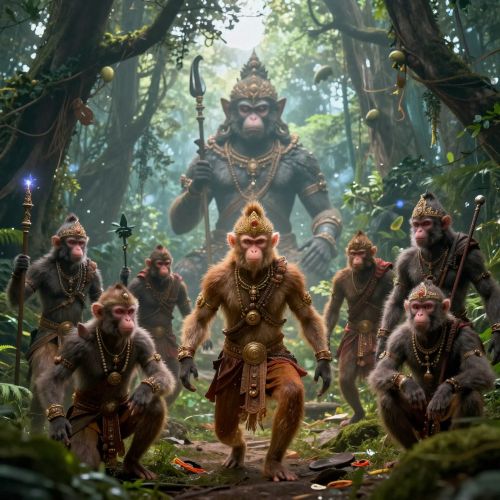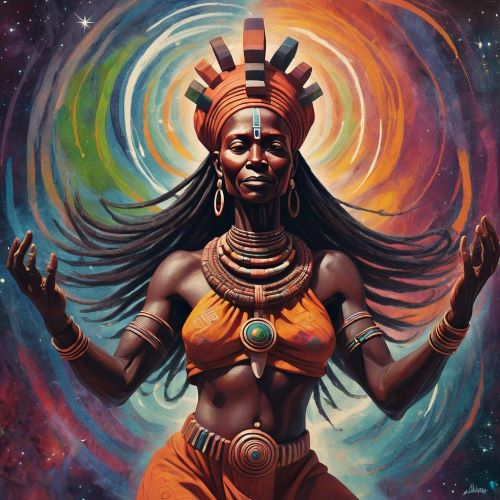Yorugu : God of Chaos
Listen
At a glance
| Description | |
|---|---|
| Origin | Dogon Mythology |
| Classification | Gods |
| Family Members | N/A |
| Region | Mali |
| Associated With | Cunning, Deception, Chaos, Trickery |
Yorugu
Introduction
Among the Dogon people of Mali, Yorugu—also known as the Pale Fox—is more than a mythological character; he is a vital symbol of cosmic imbalance, rebellion, and the loneliness that stems from disconnection. In Dogon cosmology, which weaves together astronomy, philosophy, and ancestral storytelling, Yorugu represents the consequence of disrupting universal harmony. His actions are said to have created disorder, imperfection, and mortality—forces that still echo through Dogon interpretations of existence. Rather than being simply a villain, Yorugu stands as a figure through whom the Dogon reflect on the necessity of balance and the dangers of self-centered action.
Physical Traits
Yorugu’s physical form is that of the pale or white fox—an animal rarely seen during the day, elusive and wild. This choice is deliberate. Among the Dogon, color holds immense symbolic weight, and the fox’s pale appearance stands in contrast to the rich reds and browns of the Malian landscape. It reflects incompleteness and spiritual impurity. Unlike other totemic animals that symbolize order or strength, Yorugu’s fox form embodies secrecy, night-time wandering, and spiritual exile. His aloofness mirrors his mythological role as an entity permanently out of sync with the rest of creation. His very movements across the sand are interpreted in divination, further cementing his mysterious, otherworldly presence.
Family
Yorugu’s origins trace back to a divine mistake—or rather, a cosmic disobedience. Created by Amma, the supreme being, Yorugu was meant to emerge as part of a perfect twin pair, reflecting the Dogon concept of duality and balance. However, he broke this harmony by emerging alone, before his time. In doing so, he severed the cosmic symmetry Amma had intended, leading to profound metaphysical consequences. His search for his missing female counterpart became a symbol of his spiritual incompleteness. His attempt to recreate that lost union through incest with the Earth is described not just as taboo, but as the moment when disorder, death, and impurity were born into the universe. His progeny—spirits of the wild—are regarded as carriers of that original imbalance.
Other names
Over time, Yorugu has taken on many names, each capturing a different facet of his mythos. He is initially known as Ogo, the disobedient being. Once he descended into rebellion and was transformed, he became Yorugu or Yurugu, both of which are used interchangeably in oral and academic sources. He is also called the Pale Fox, and in some accounts, The Jackal. Another lesser-known title is Yo Ogo, meaning “Thief Ogo,” referring to his act of stealing divine knowledge or speech—la parole—from both Amma and the Earth. These titles aren’t just identifiers; they express the evolving interpretation of Yorugu across time and storytelling, marking him as a creature of cunning, betrayal, and cosmic imbalance.
Powers and Abilities
While not traditionally powerful in a heroic or divine sense, Yorugu wields influence in subtler, more dangerous ways. His primary gift is foresight. Even after being punished—his tongue cut off by Amma—he retained the ability to communicate through signs, especially through the patterns his tracks leave in the sand. Dogon diviners continue to use these signs in spiritual consultations, believing that Yorugu, despite his flaws, holds valuable insight into hidden truths.
Yorugu’s power lies in his relentless opposition to order. He is the embodiment of unfinished creation, of something that broke away before it was complete. His constant motion and inability to rest reflect his ongoing pursuit of what was lost—his twin, balance, and divine favor. In myth, his presence is often accompanied by dryness and sterility—conditions that reflect his alienation from life-giving forces. Yet his resistance also gives birth to movement, adaptation, and transformation—making him paradoxically essential to the world’s evolution.
Modern Day Influence
Yorugu’s myth did not remain confined to ancient Dogon storytelling. In the 20th century, his symbolism took on powerful political and cultural dimensions, most notably through the work of African-American anthropologist Marimba Ani. In her influential book Yurugu: An African-Centered Critique of European Cultural Thought and Behavior, she reimagined the Pale Fox as a metaphor for Western civilization’s deviation from spiritual and communal values. To Ani, “Yurugu” symbolized the split between rationalism and spiritual wholeness—a split she argues underpins the colonial mindset.
Her interpretation casts Yorugu as a cautionary symbol for modern societies: a reminder of what happens when the pursuit of dominance overrides harmony and connection. The book’s impact has extended far beyond academia. It has influenced discourse in Pan-Africanism, decolonial thought, and even pop culture. Artists like Erykah Badu have referenced the figure in music and public statements, using him as a symbol of resistance to cultural erasure and domination.
Despite increasing Islamic influence and modernization in Dogon regions, traditional rituals involving Yorugu persist. Diviners still interpret fox tracks in sandy grids, keeping alive the ancient belief that even from disorder comes truth. Through both spiritual practice and cultural critique, Yorugu remains a living symbol—one whose legacy is still shaping conversations about balance, identity, and the costs of rebellion.
Related Images
Source
Allen, P. J., & Saunders, C. (2018). YURUGU (African mythology). Godchecker. Retrieved June 21, 2025, from https://www.godchecker.com/african-mythology/YURUGU/
Griaule, M., & Dieterlen, G. (1986). The Pale Fox. Chino Valley: Continuum Foundation.
Encyclopedia.com. (n.d.). Dogon Religion. Retrieved June 21, 2025, from https://www.encyclopedia.com/environment/encyclopedias-almanacs-transcripts-and-maps/dogon-religion
Ani, M. (1994). Yurugu: An African-centered critique of European cultural thought and behavior. Africa World Press.
Encyclopedia.com. (n.d.). Dogon Religion | Encyclopedia.com. Retrieved from https://www.encyclopedia.com/environment/encyclopedias-almanacs-transcripts-and-maps/dogon-religion
Farrell, T. (2018, April 16). How The Universe Began ~ The Dogon View – Tish Farrell. Retrieved from https://tishfarrell.com/2018/04/16/how-the-universe-began-the-dogon-view/
Study.com. (n.d.). Dogon People | History, Culture & Symbols – Study.com. Retrieved from https://study.com/academy/lesson/dogon-history-culture-religion-people.html
LibGuides. (2024, September 9). Traditional African Religions: Dogon – LibGuides. Retrieved from https://research.auctr.edu/c.php?g=404402&p=2752857
Goisbeault, N. (2015). The Dogon Myth of Creation. Taylor & Francis. Retrieved from https://www.taylorfrancis.com/chapters/edit/10.4324/9781315677095-35/dogon-myth-creation-nicole-goisbeault
Frequently Asked Questions
Who is Yurugu in Dogon mythology?
Yurugu (also written “Yorugu”) is a deity of chaos and disorder in the mythology of the Dogon people of Mali. He is often depicted as the “Pale Fox” or “Jackal” and is the transformed form of the rebellious god Ogo, cast out and bound to the dry wastes as punishment for his disruptive acts.
What does Yurugu symbolize?
Yurugu embodies chaos, imperfection, and the break from cosmic order. His mythic role reflects the consequences of transgression, the disruption of harmony, and the ongoing tension between structure and formlessness in Dogon cosmology.
What are the origins of Yurugu?
According to Dogon myth, Yurugu was originally the god Ogo, a creation of the supreme deity Amma. Because of his rebellious behaviour — including an act that threatened creation itself — he was transformed into Yurugu, the Pale Fox, and banished.
What is Yurugu’s role in the cosmic order?
Yurugu serves as the counter-force in the Dogon universe: while other gods maintain structure and fertility, he dwells in the arid wastelands and provokes chaos. His presence underscores that disorder is part of the cosmic fabric and acts as a reminder of the boundaries of creation.
How is Yurugu represented in modern culture and myth-study?
Though rooted in Dogon tradition, Yurugu has drawn attention among mythologists as a figure of trickery and cosmic imbalance. He features in comparative mythology discussions of chaos gods, and inspires modern writing and artwork exploring themes of rebellion, dis-order and transformation.







